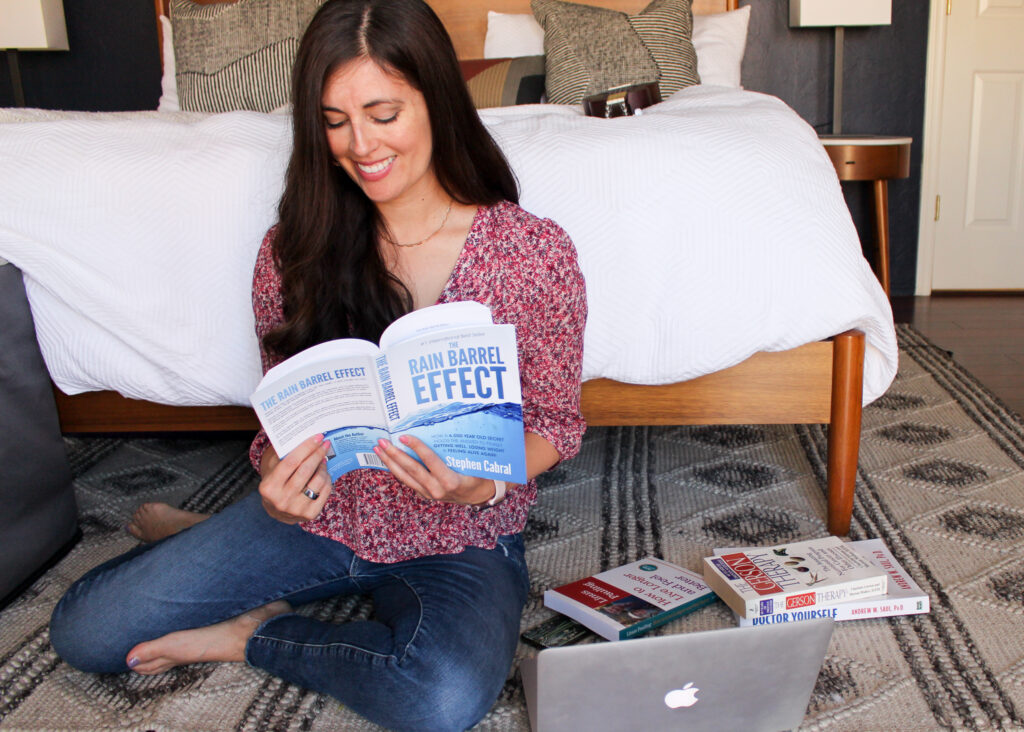
[ad_1]
The nine most common exercises are Plank, Sit-Up, Bridge, Squat, Push-Up, Triceps Dip, Lunge, Side Lunge, and Donkey Kick. Performing common exercises may seem easy, but many people make easily avoidable mistakes that decrease the exercises’ effectiveness, or worse, lead to injury.
Learn how to perform the nine most common exercises the right way by following the images and descriptions below.
9 Most Common Exercises with Correct and Incorrect Examples
1. Plank
Plank mistake #1
One of the most common exercises is the classic Plank. It’s such a common exercise because it’s easy to do and hits the primary muscle groups (especially the core) throughout the body. It’s also an easy exercise to perform incorrectly.
Common Plank mistakes include hips pushed up instead of level. This reduces the load on your core; thus, missing most of the benefits of this common exercise.
Dropping the hips is another frequent plank mistake. This happens when your core is too weak to sustain the proper position throughout the plank interval. Beware of dropping hips and decrease the time of your planks so that you maintain good form.
Check out the examples below to see the right and wrong ways to plank. The right way to plank is to keep your body in as straight a line as possible. Arms form an L shape from your shoulders; hips stay level with your shoulders and heels.
Tired of the common plank? You have to try these nine plank variations!
- Wrong: Hips too high
- Right: Keep hips in line with shoulders and heels

Plank mistake #2
- Wrong: Hips too low
- Right: Keep hips in line with shoulders and heels

2. Sit-up
Another widespread exercise is Sit-Ups. Sit-Ups target the abdominal muscles and promote lower back flexibility and good posture when correctly performed.
The most common exercise mistake for Sit-Ups is to round your back by pulling your neck forward. This happens because of underdeveloped core muscles (which is why you do sit-ups in the first place).
Your body recruits other muscles to pull your body through the movement to compensate for poor form and underdeveloped muscles. Unfortunately, this negates the focus of sit-ups as an ab focused exercise and can lead to lower back pain and neck strains.
Keep your eyes focused forward to maintain a neutral back. Pick an object a meter away on a wall and keep your eyes locked on it as you sit up. This will help you maintain proper form. Think of really engaging your ab and lower back muscles to pull you through the sit-up. If you feel like your upper back and neck contribute to the exercise, slow down and refocus on your form.
Sit-up mistake #1
- Wrong: Pulling on your neck
- Right: Keep your neck straight, in line with your upper back

Sit-up mistake #2
- Wrong: Leading with the chin (poking your chin out)
- Right: Keep your chin tucked in and your eyes facing straight ahead

Sit-up mistake #3
- Wrong: Anchoring your feet
- Right: Keep your feet stable on the floor

3. Bridge
Bridge is a super common exercise to build glute strength, which is essential for running and building a bigger booty. Glute bridges are great to do as a warm-up before strength training or after long periods of sitting at a desk to wake up your glutes.
If this standard exercise isn’t part of your routine, make sure it is now and do it right by following the examples below!
Check out this post for 4 Glute Bridge exercises for your next butt workout!
Bridge mistake #1
- Wrong: Overarching your back
- Right: Start lifting from your hips and go up until your body forms a straight line

Bridge mistake #2
- Wrong: Uneven foot pressure
- Right: Distribute the pressure evenly. Push from your heels, not the edge of your foot or your toes (unless you aim to activate your calf muscles more).

4. Squat
Squats are a prevalent exercise because they hit all the major muscle groups in a compound movement. While Squats look easy, they’re very easy to do wrong. Even squatting without weights can lead to injury if performed incorrectly. However – done right – Squats build glute, quad, lower back, and core muscle. They’re fantastic for your posture too!
Squat mistake #1
- Wrong: Knees caving in
- Right: Keep knees in line with your toes or slightly pushed out

Squat mistake #2
- Wrong: Bending the knees first
- Right: Initiate the squat by pushing your hips back

Check out other common Squat mistakes or try these 6 Squat variations.
5. Push-up
Who hasn’t done or tried Push-Ups? They might be the most common exercise of all time. That’s because push-ups target many of the major upper body muscle groups like shoulders and pectorals. They’re also great for your core. Plus, you can do them anywhere!
Push-ups can lead to shoulder, elbow and wrist pain if done wrong. Like the plank, don’t let your hips drop towards the ground. Additionally, focus on squeezing your shoulder blades together during the push-up phase and keep those elbows tucked like a bird, not a frog.
Check out ten ways to add some spice to your push-up routine!
Push-up mistake #1
- Wrong: Elbows flaring
- Right: Keep your elbows slightly tucked in and your shoulder blades together

Push-up mistake #2
- Wrong: Sagging midsection
- Right: Keep hips in line with shoulders

Push-up mistake #3
- Wrong: Hands in front of shoulders, elbows in “T-shape”
- Right: Put your hands directly under your shoulders, elbows in “A-shape”

Remember to set up properly for the Push-up.
6. Triceps Dip
The Triceps Dip is a less common exercise but still valuable to include in your workout routine. It works the triceps and upper arms. It’s perfect for working on shoulder mobility (but be careful if you have sensitive shoulders)!
Think of this exercise as a reverse push-up. The same rules apply to the Triceps Dip as the Push-Up.
Dip mistake #1
- Wrong: Flaring elbows
- Right: Try to keep elbows in line with your shoulders and your shoulder blades together

Dip mistake #2
- Wrong: Back collapsing, shoulders going forward
- Right: Keep your chest “open”: shoulders back and your shoulder blades together

7. Lunge
Lunges are a common exercise for runners because they target the glutes, hamstrings, and quads. They promote hip mobility and proper running form.
Lunges have the potential to cause knee injuries if poorly done. They can lead to injuries like Patellar Tendonitis. Avoid injuring your knees or pulling your hamstrings by ensuring your knee doesn’t go past your toes. Keep your back neutral in a straight line. Don’t jump or bounce off your front foot–bring your trailing leg up to it and come smoothly out of the lunge into a standing position.
Learn more about taking care of your knees and overall joint health.
Lunge mistake #1
- Wrong: Front knee too far forward
- Right: Try to keep your front knee over your toes

Lunge mistake #2
- Wrong: Excessive forward lean in upper body
- Right: Look straight ahead and try to keep your chest up

Master the basics and you’ll be ready for these 10 Lunge variations!
8. Side Lunge
A less common exercise is the side lunge–but it shouldn’t be! Side lunges are great for ball sports athletes, skiers, trail runners, and overall functional mobility and stability. They help your legs, especially your knees, cope with sideways loading. Think of sudden changes in direction like in football–this is a perfect case for doing side lunges.
Since most of us spend most of our time moving forward and backward, the stabilizer muscles that help us cope with lateral loads can become too weak. If those muscles are too weak, sudden lateral movements (like tripping while trail running or catching an edge skiing) can cause severe and instant injury.
Ease into lateral lunges as they can leave you pretty sore if you’re not used to them. Of course, follow the examples below to do this common exercise the right way!
Side Lunge mistake #1
- Wrong: Collapsing ankle
- Right: Keep back foot stable on the floor

Side Lunge mistake #2
- Wrong: Pointing toes of the bent leg sideways
- Right: Point the toes of the bent leg forward

Side Lunge mistake #3
- Wrong: Pushing the knee too far out
- Right: Keep your bent knee over your toes

9. Donkey Kick
Donkey kick is another widespread exercise that is like a reverse one-legged bridge. Donkey kicks are terrific for improving hip mobility, quad strength, and of course, building that booty! But be careful because they can also lead to groin injuries if you suffer from tight hip flexors (like sitting at a desk all day).
Donkey Kick mistake #1
- Wrong: Overarching the back
- Right: Try to keep your lower back in a neutral position

Donkey Kick mistake #2
- Wrong: Foot turns inward or outward
- Right: Keep your foot parallel to your lower leg, even if you move your thigh to the side

Important:
Be patient. Don’t expect to get it right the first time! Look at yourself in the mirror, take a video, practice, and explore the movement. Don’t get discouraged by all these common exercise mistakes. It’s easy to “remember” the right form once you feel how your muscles are more effectively activated.
For a balanced home bodyweight workout program check out the 12-week training plan from the adidas Training app. Exercise videos demonstrating proper form are included in all workouts.
***
[ad_2]
Source link







